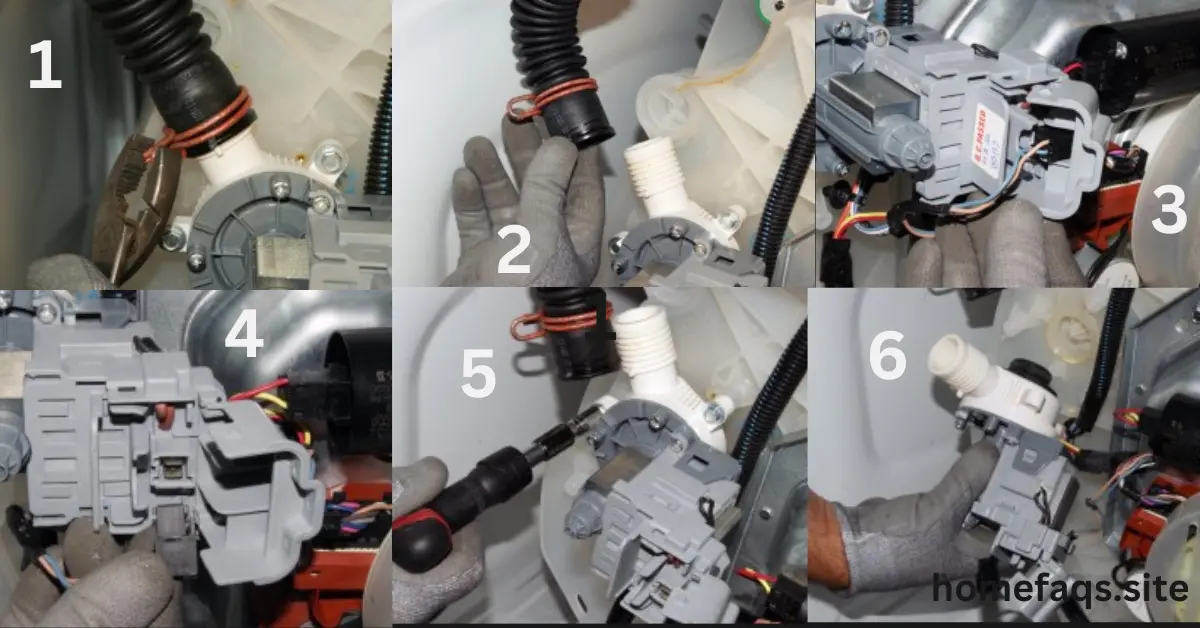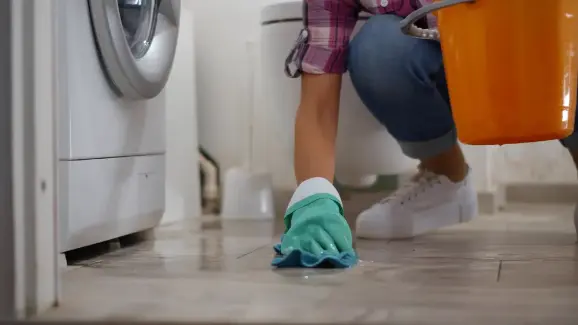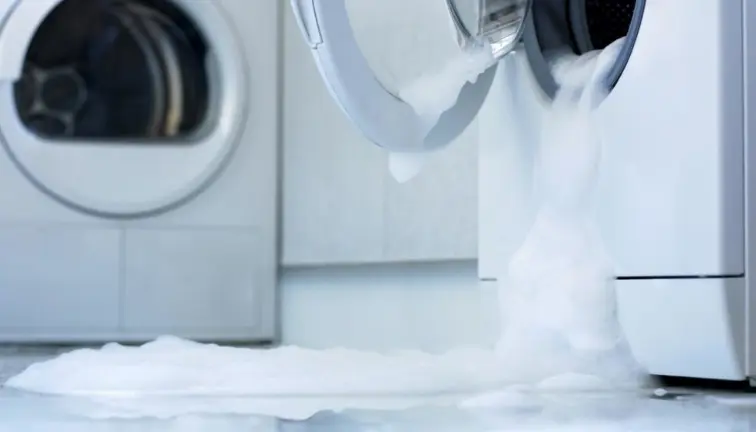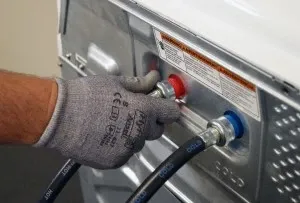Why Would A Washing Machine Leak From Underneath?

When a washing machine leaks, it can be annoying. But if you know why it is happening, you can fix it better. This article will explain why your washing machine might be leaking and how to fix it.
Mainly there are 6 reasons why washing machine leaks, here below
1. Damaged Gasket

- The gasket, which is like a rubber ring around the washing machine's door, stops water from leaking when the machine is running. After some time, this rubber part can get old, cracked, or changed in shape, this cause water leak out. This is a main reason why water might leak from under the washing machine.
How to fix Damaged Gasket in washing machine?
Step 1 - Find the gasket: The gasket is the big rubber ring around the opening of the washing machine drum.
Step 2 - Look closely at the gasket: See if there are any cracks, tears and damaged. If it looks old and fragile. You will need to get a new one.
Step 3 - Remove the old gasket: unscrew or unclip the front panel of the washing machine to get to the old gasket.
Step 4 - Clean the gasket area: After remove the old gasket. Use a cloth and mild soap to clean the area well.
Step 5 - Install the new gasket: Purchase correct replacement gasket. Put some gasket lubricant or dish soap on the groove of the new gasket to help it slide in smoothly. Start at the top and push the gasket way around and pressing it in firmly.
Step 6 – Check the gasket seal: After you put in the new gasket, run your hand around it to make sure it's flat with no wrinkles or spaces. This helps prevent leaks.
Final step – Reassemble: Attach the front panel and any other parts you had to remove.
2. Damaged Drain Pump

- The drain pump is responsible for removing water from the washing machine.If the pump is stuff dirt or damaged it can cause leaks water from under the machine.
How to fix Damaged Drain Pump washing machine?
Step 1 – Turn off the washing machine and water
Step 2 – You might need to remove the front panel cover at the bottom of the washer
Step 3 – Find the drain pump: It's usually connected to the drain hose and likely have a removable cover or housing.
Step 4 – Disconnect the drain hose from the pump and remove any housing using screws.
Step 5 – Check the pump for any problems like cracks in the cover, a motor that looks burned out, or if there's anything stuck in the fan blades inside.
Step 6 – If the pump is cracked or the fan blades are broken, you will need to replace new drain pump from the manufacturer
Step 7 – If it is just dirt or stuff that is stuck in the pump, you might be able to clean it out with a small brush or some compressed air. Try not to take it apart more unless you really need to.
Step 8 – Reinstall the new pump or put back the cleaned one making sure seals are properly seated, Reconnect the drain hose.
Step 9 – Reassemble the washer housing/panels and reconnect the power and water supply.
Step 10 – Run a test cycle make sure the new drain pump is working properly and not leaking.
3. Damaged Water Leaks Seal

- prevents water from leaking out of the washing machine. If it's damaged or worn out, water can leak.
How to fix Damaged Seal Water Leaks washing machine?
1. Unplug the washing machine and turn off the water supply lines.
2. Open the door and locate the door seal/gasket. This is the large rubber seal that goes around the opening of the wash tub.
3. Inspect the door seal carefully. Look for any cracks, tears, brittleness, or areas that are looks old and changed shape
4. If the seal is damaged, it will need to be replaced. Purchase the correct replacement door seal for your specific washing machine model.
5. Remove the old door seal by pulling and working it out of the groove around the door opening. You may need a flat tool like a plastic putty knife to assist.
6. Clean the groove area thoroughly with a rag and mild detergent to remove any dust
7. Apply a gasket lubricant or dishwashing liquid around the groove to help the new seal install smoothly.
8. Carefully press the new door seal into the groove, working your way around the entire opening. Make sure it lays flat with no twists or folds.
9. Once installed, run your fingers around the seal to ensure it is seated properly in the groove.
10. Reconnect the washer, restore the water and power connections.
11. Run a test cycle and inspect for any remaining leaks from the new door seal.
4. Overloading the Washing Machine
- Putting too many clothes in the washing machine can cause it to overload. When this happens, water might splash out of the tub and cause leaks from under the washing machine.
5. Excessive Detergent

- If you use too much detergent, it can make a lot of bubbles, which might overflow and leak from under the washing machine.
6. Damaged Hose Connections

- Look at the hoses that connect to the washing machine's water supply. If they're broken or look old, or if they're not connected tightly, or if there are cracks, water might leak out.
How to fix Damaged Hose Connections ?
- Turn off the Power and Water: First, unplug the washing machine from the power outlet and turn off the water supply valves.
- Access the Hose Connections: Depending on your washing machine model, you might need to remove a panel or access door to reach the hose connections.
- Inspect the Hoses: Check the hoses for any visible damage like cracks, leaks, or wear and tear. If you notice any issues, they will likely need to be replaced.
- Remove the Old Hoses: Get some pliers or a wrench. Use them to loosen the clamps that hold the hoses onto the machine and the water pipes. Then, take the hoses off carefully.
- Clean the Connection Points: Clean the hose connections on both the washing machine and the water supply pipes to ensure a good seal.
- Install the New Hoses: If you are replacing the hoses, make sure to use the correct type and size. Attach one end of each hose to the corresponding connection on the washing machine and the other end to the water supply pipes.
- Tighten the Hose Clamps: Secure the hoses in place using hose clamps or similar fasteners. Make sure they are tightened properly to prevent leaks.
- Turn on the Water and Power: Once everything is securely connected, turn the water supply valves back on and plug the washing machine back into the power outlet.
- Test for Leaks: Run a short wash cycle to check for any leaks around the hose connections. If you notice any leaks, turn off the water supply and power again and double check the connections.
- Final Check: After confirming there are no leaks, reassemble any panels or access doors you removed to access the hose connections.
The below video provide step by step guide to fix washing machine leak from underneath
Washer Troubleshooting: Front-Load Washer Is Leaking - How to Fix Your Washer
